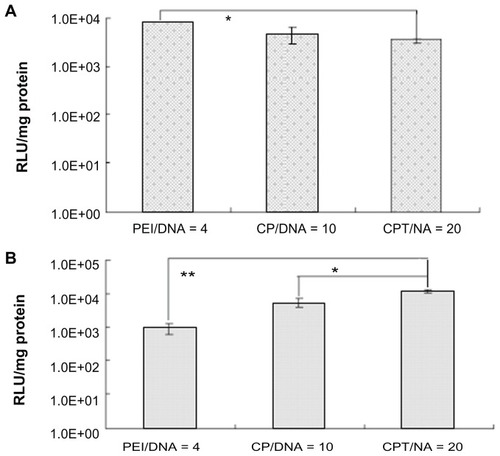Figures & data
Figure 1 Reaction scheme for the synthesis of chitosan/polyethylenimine/peptide complex.
Abbreviations: CP, chitosan-linked polyethylenimine; CPT, chitosan/polyethylenimine/peptide complex.
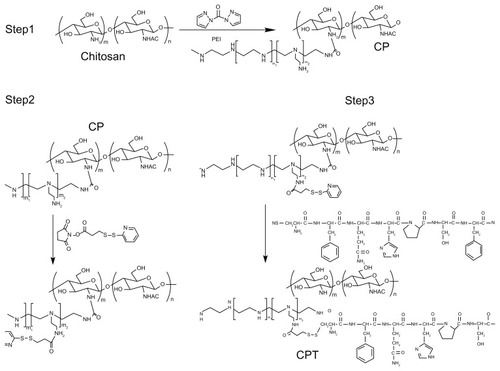
Figure 2 1H nuclear magnetic resonance spectra of chitosan-linked polyethylenimine, peptide, and chitosan/polyethylenimine/peptide complex in heavy water (D2O) at room temperature.
Abbreviations: CP, chitosan-linked polyethylenimine; CPT, chitosan/polyethylenimine/peptide complex.
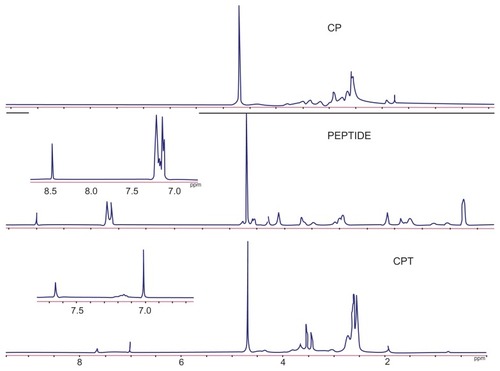
Figure 3 (A) Whole band ultraviolet scanning of chitosan-linked polyethylenimine, peptide, and chitosan/polyethylenimine/peptide complex. (B) The grafting rate of the chitosan/polyethylenimine/peptide complex.
Abbreviations: Abs, absorbance; CP, chitosan-linked polyethylenimine; CPT, chitosan/polyethylenimine/peptide complex.
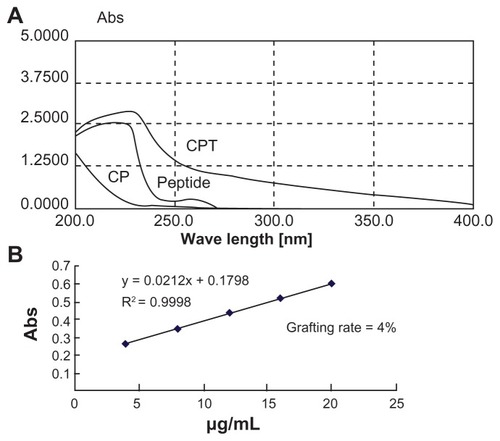
Figure 4 Physicochemical properties of the polyplexes. (A) Agarose gel electrophoresis of the chitosan/polyethylenimine/peptide complex at different weight/weight ratios. Lane 1: marker; lane 2: naked DNA; lane 3: weight/weight = 0.5; lane 4: weight/weight = 1; lane 5: weight/weight = 2; lane 6: weight/weight = 3; and lane 7: weight/weight = 4. (B) zeta potential of the polyplexes formed by pGL3 plasmid with polyethylenimine, chitosan-linked polyethylenimine, and chitosan/polyethylenimine/peptide complex at the gene delivery’s weight/weight ratios and (C) Particle size (measured by dynamic light scattering) (D) Morphology of the chitosan/polyethylenimine/peptide/DNA complex (weight/weight = 20) as observed by transmission electron microscope (×65,000). Bar: 200 nm.
Abbreviations: CP, chitosan-linked polyethylenimine; CPT, chitosan/polyethylenimine/peptide complex; PEI, polyethylenimine.

Figure 5 Cytotoxicity of the complexes in three cell lines: chitosan-linked polyethylenimine/DNA (mass ratio = 10), polyethylenimine/DNA (nitrogen/phosphorus ratio = 10), and chitosan/polyethylenimine/peptide/DNA (mass ratio = 20).
Notes: n = 3; data are expressed as mean ± standard deviation (error bars).
Abbreviations: CP, chitosan-linked polyethylenimine; CPT, chitosan/polyethylenimine/ peptide complex; PEI, polyethylenimine.
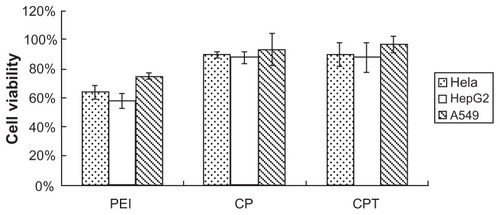
Figure 6 Transfection efficiency of chitosan-linked polyethylenimine/DNA and chitosan/polyethylenimine/peptide/DNA (pGL3 control) complexes in (A) HepG2 cells, (B) A549 cells, and (C) HeLa cells.
Note: *P < 0.05.
Abbreviations: CP, chitosan-linked polyethylenimine; CPT, chitosan/polyethylenimine/peptide complex; RLU, relative light unit.
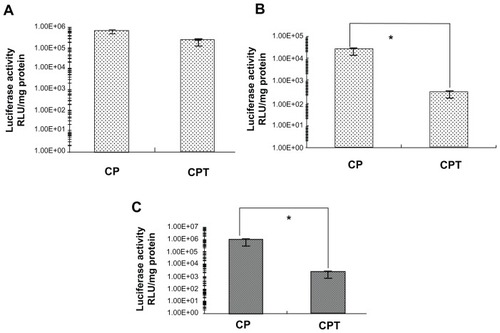
Figure 7 The free peptide competitive study. HepG2 cells were incubated in Dulbecco’s modified Eagle medium with different peptide concentrations before the transfection of chitosan/polyethylenimine/peptide/DNA polyplexes at weight/weight ratio of 20. Luciferase expression was detected at 24 hours posttransfection.
Notes: *P < 0.05; **P < 0.01; values are presented as mean ± standard deviation.
Abbreviations: CPT, chitosan/polyethylenimine/peptide complex; RLU, relative light unit; +peptide, 0.4 mg/well of peptide added; +2peptide, 0.8 mg/well of peptide added.
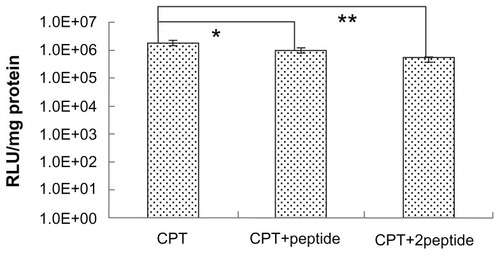
Figure 8 Intracellular distribution of fluorescein isothiocyanate-labeled DNA plasmid/chitosan/polyethylenimine/peptide complexes was observed with a confocal fluorescence microscope in HepG2 cells at 0.5, 2, 4, and 6 hours postincubation.
Notes: The upper panel shows the nucleus (red) and the middle panel shows the fluorescein isothiocyanate plasmid (green). The lower panel shows the overlay of the top two panels.
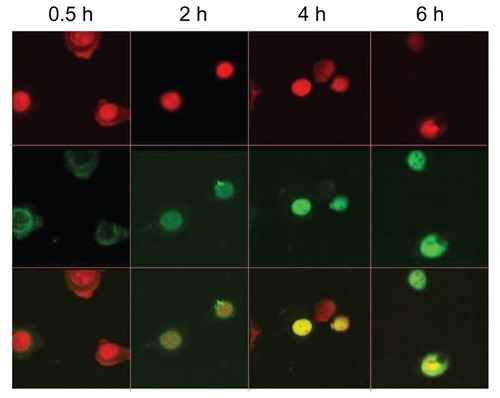
Figure 9 Tumor growth inhibition in mice after receiving phosphate buffered saline, naked DNA (interleukin-12 plasmid), polyethylenimine (25 kDa)/DNA (interleukin-12), chitosan-linked polyethylenimine/DNA (interleukin-12), and chitosan/polyethylenimine/peptide/DNA (interleukin-12) complexes. Imprinting control region mice were inoculated with H22 cells in the abdominal cavity. When tumors grew within 3 days, the mice were randomly assigned to one of the five groups and given the appropriate therapy. Tumor growth was monitored by measuring weight with a caliper every 2 days. (A) Survival rate of tumor-bearing mice. (B) Percentage of mice that experienced ascites growth with the treatment of different gene-carried nonviral vectors.
Abbreviations: CP, chitosan-linked polyethylenimine; CPT, chitosan/polyethylenimine/peptide complex; PEI, polyethylenimine.
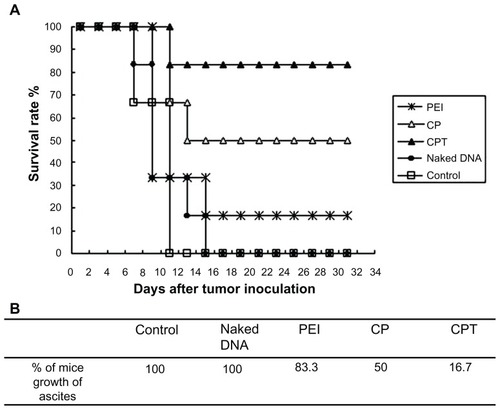
Figure 10 Transfection efficiency of chitosan-linked polyethylenimine/DNA, polyethylenimine/DNA, and chitosan/polyethylenimine/peptide/DNA (pGL3 control) complexes in H22 cells in vitro using (A) serum-free Dulbecco’s modified Eagle medium and (B) Dulbecco’s modified Eagle medium with ascites extract.
Abbreviations: CP/DNA, chitosan-linked polyethylenimine/DNA complex; CPT/DNA, chitosan/polyethylenimine/peptide/DNA complex; PEI/DNA, polyethylenimine/DNA complex; RLU, relative light unit.
